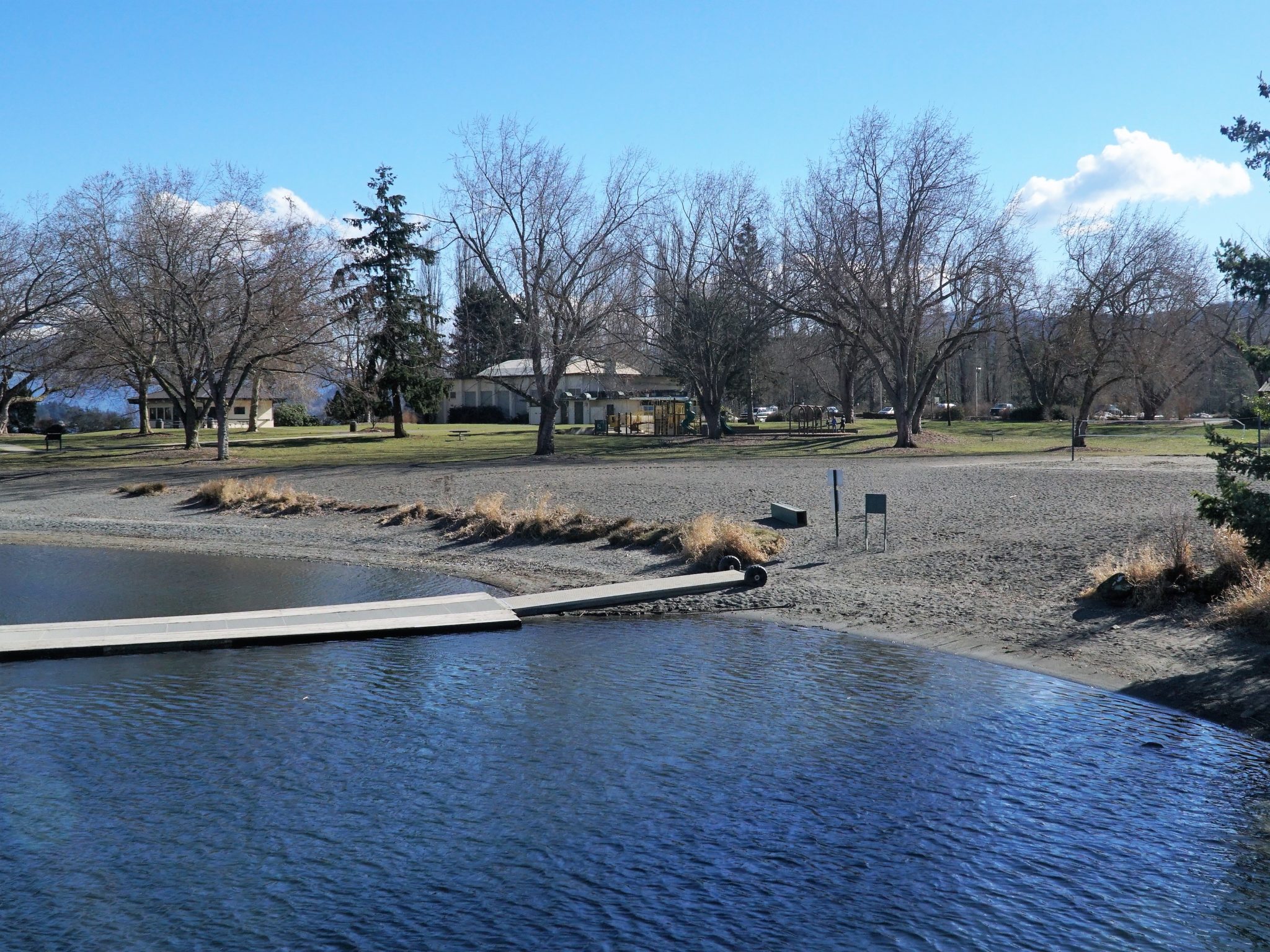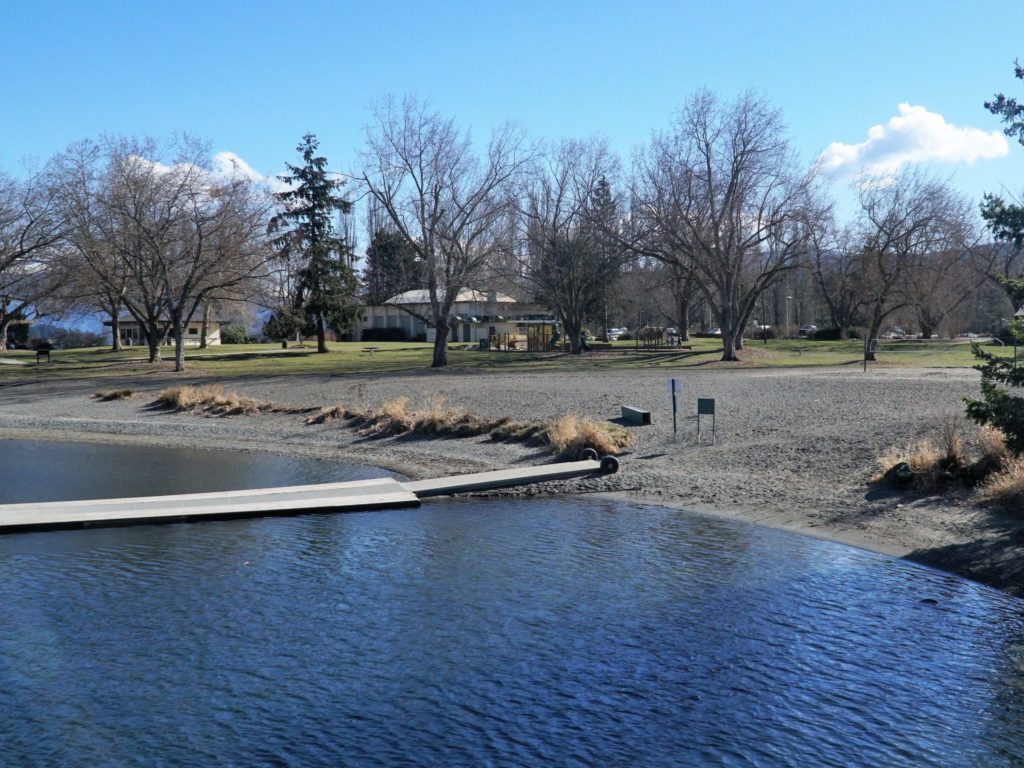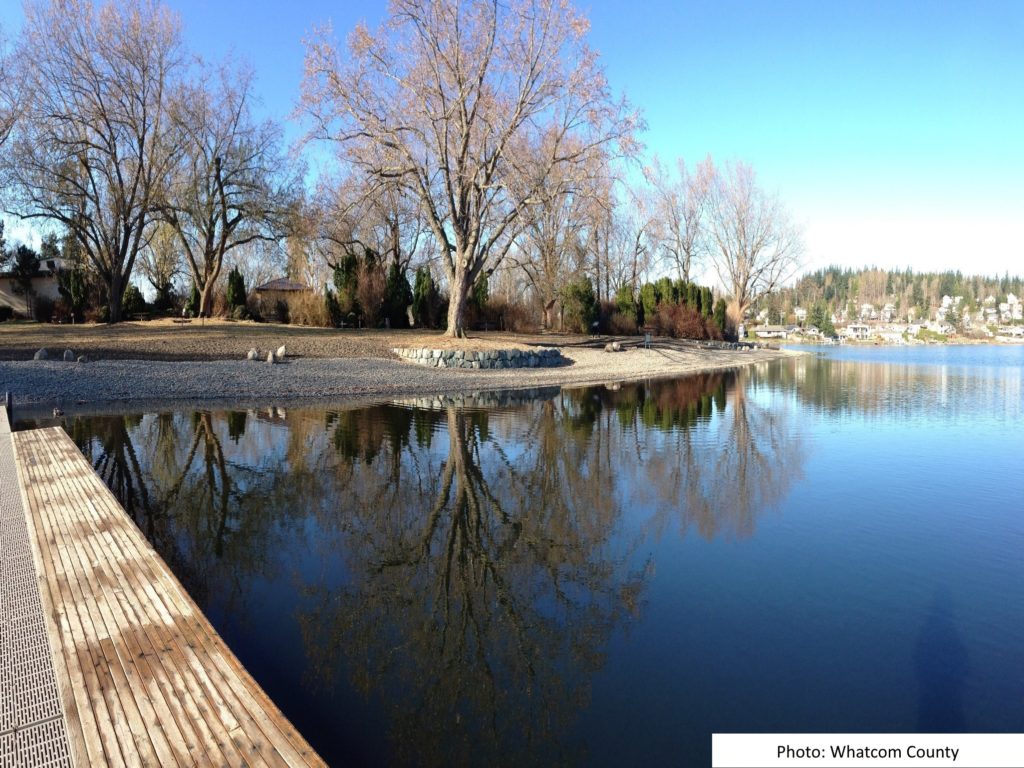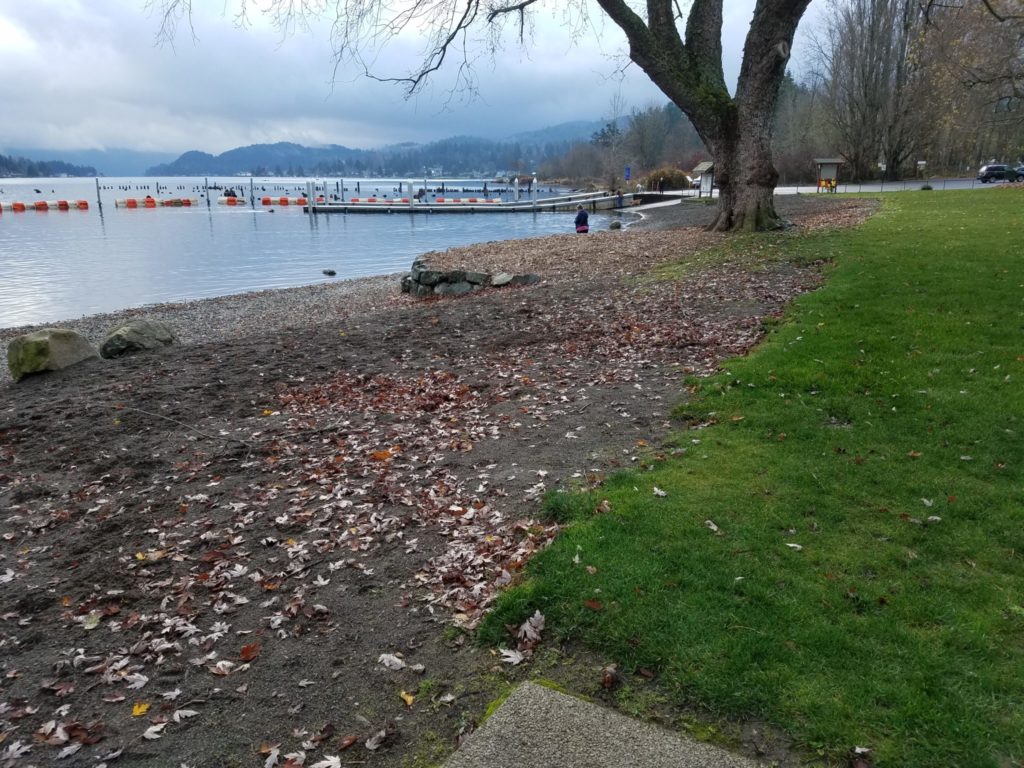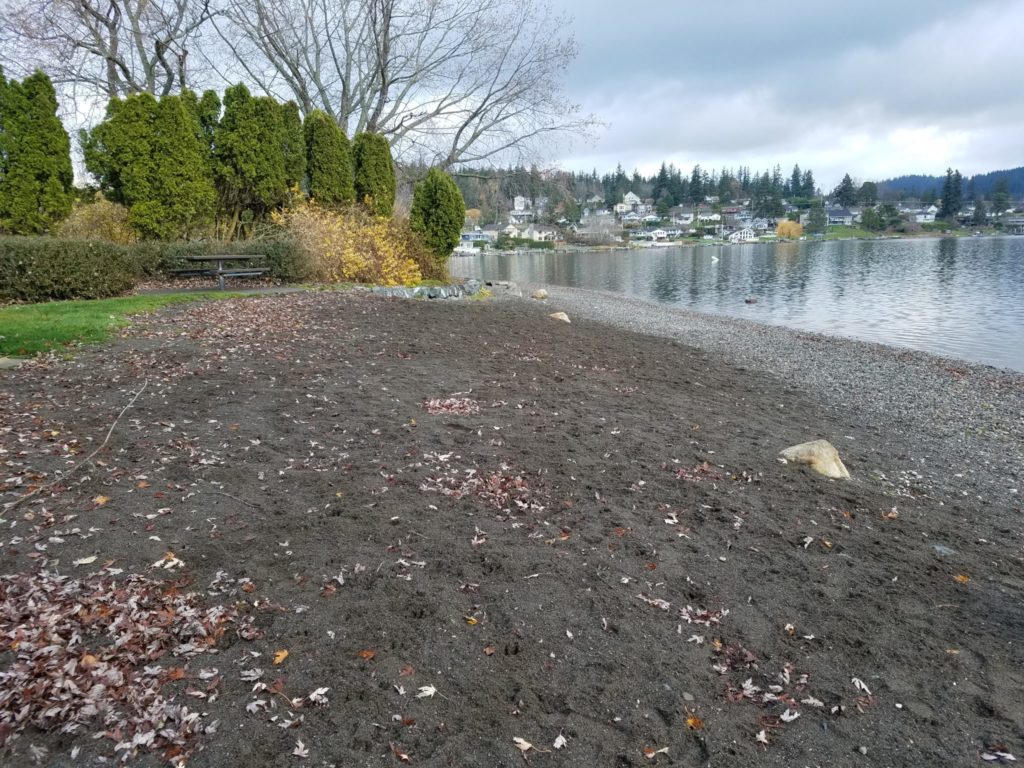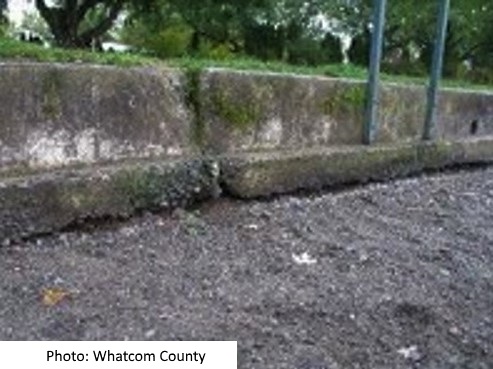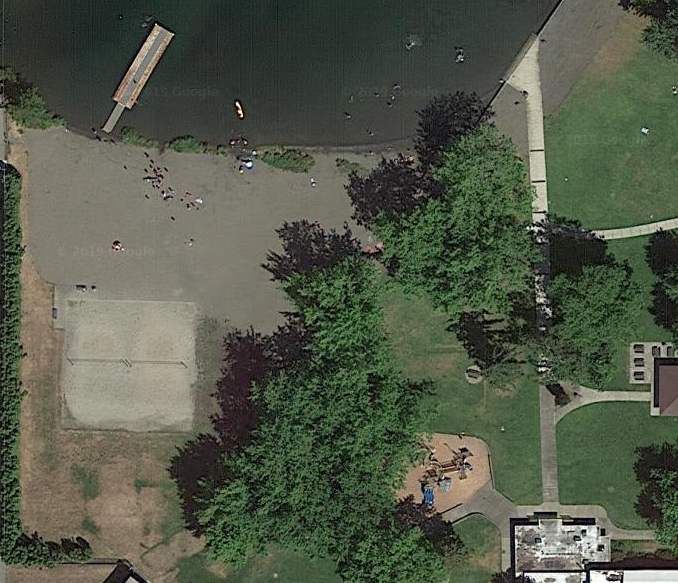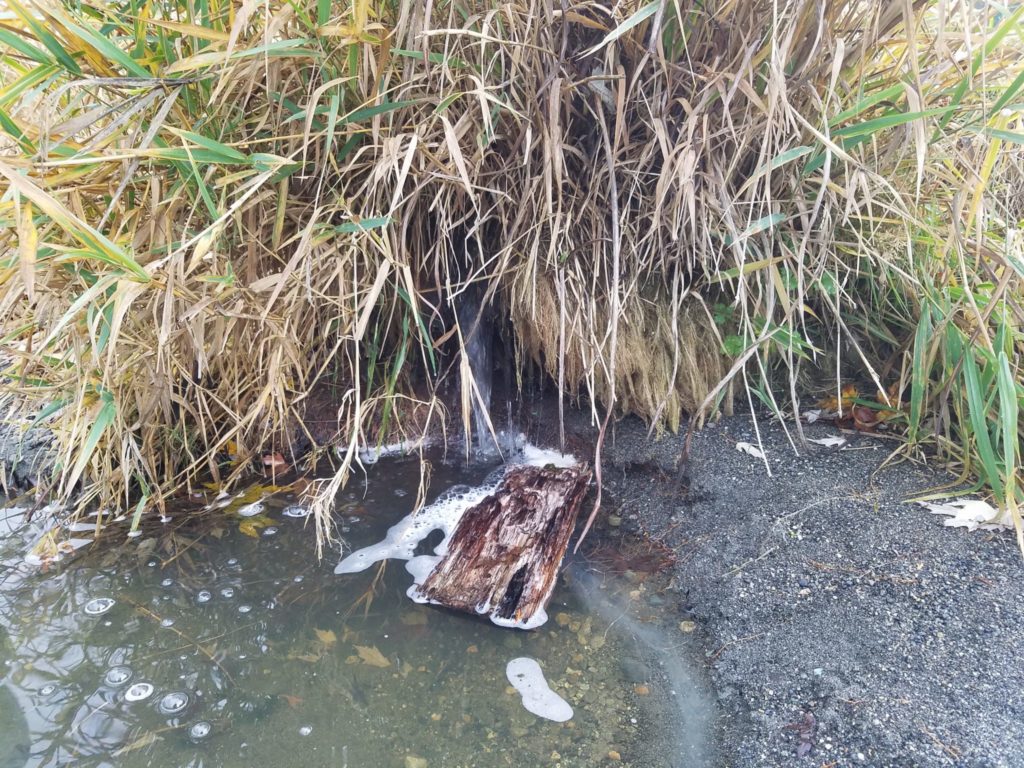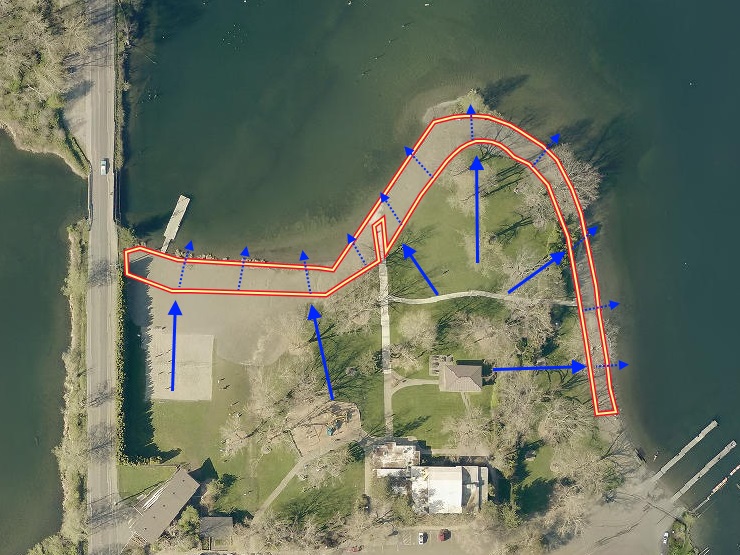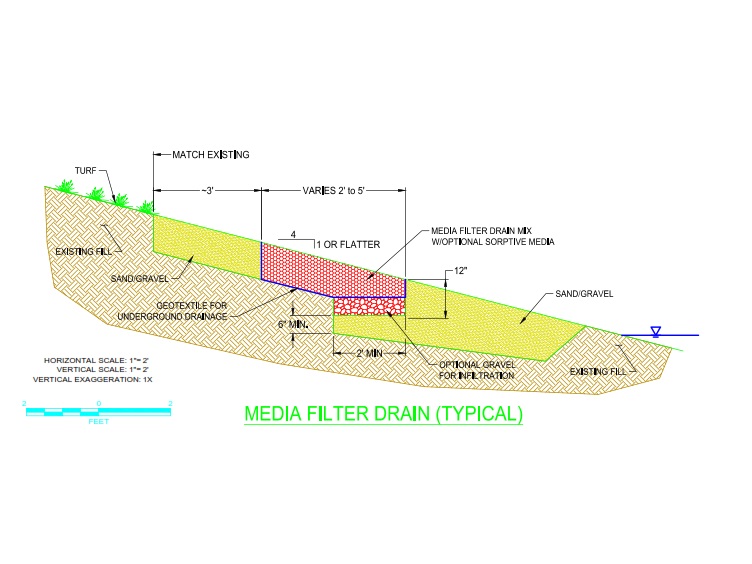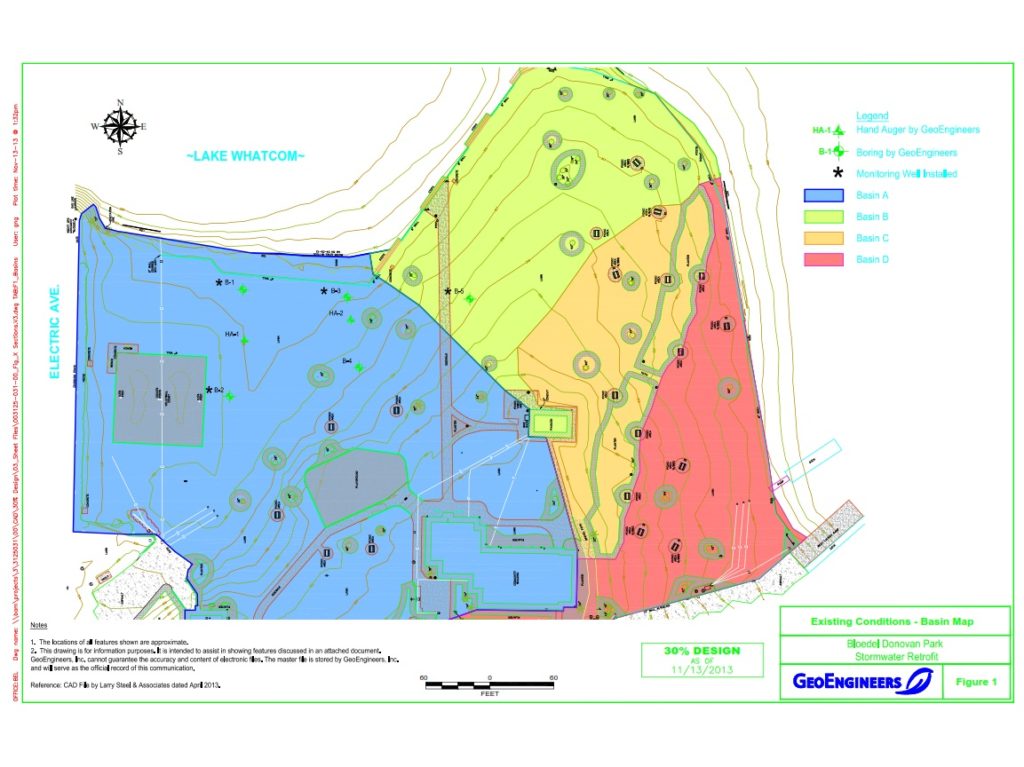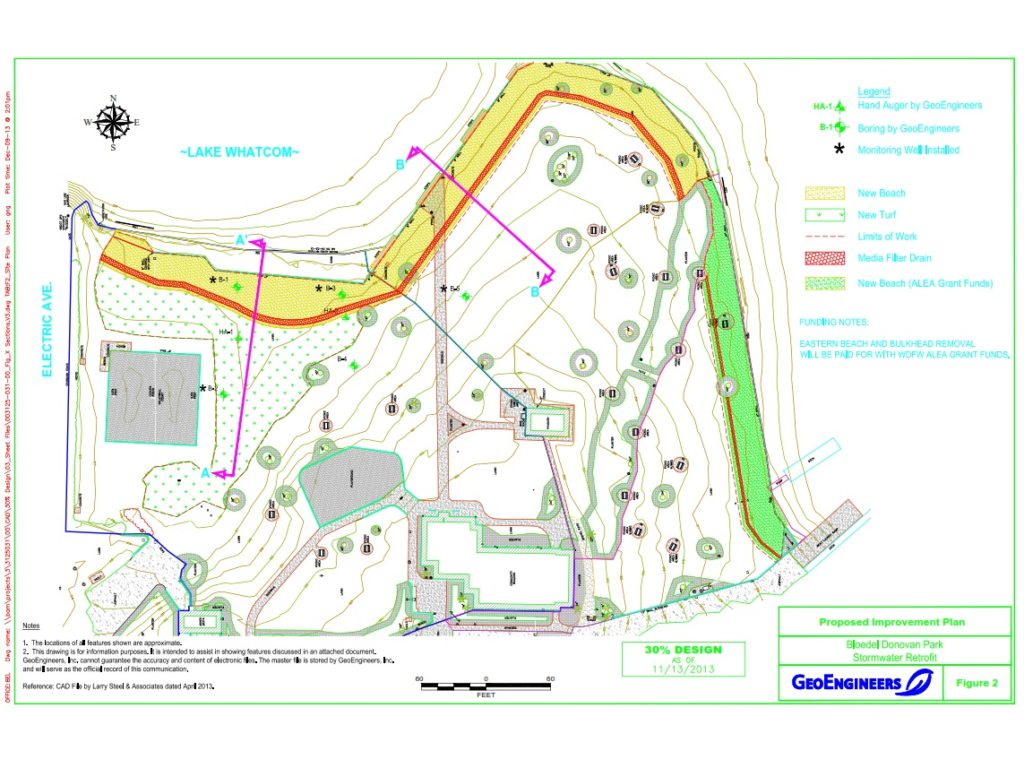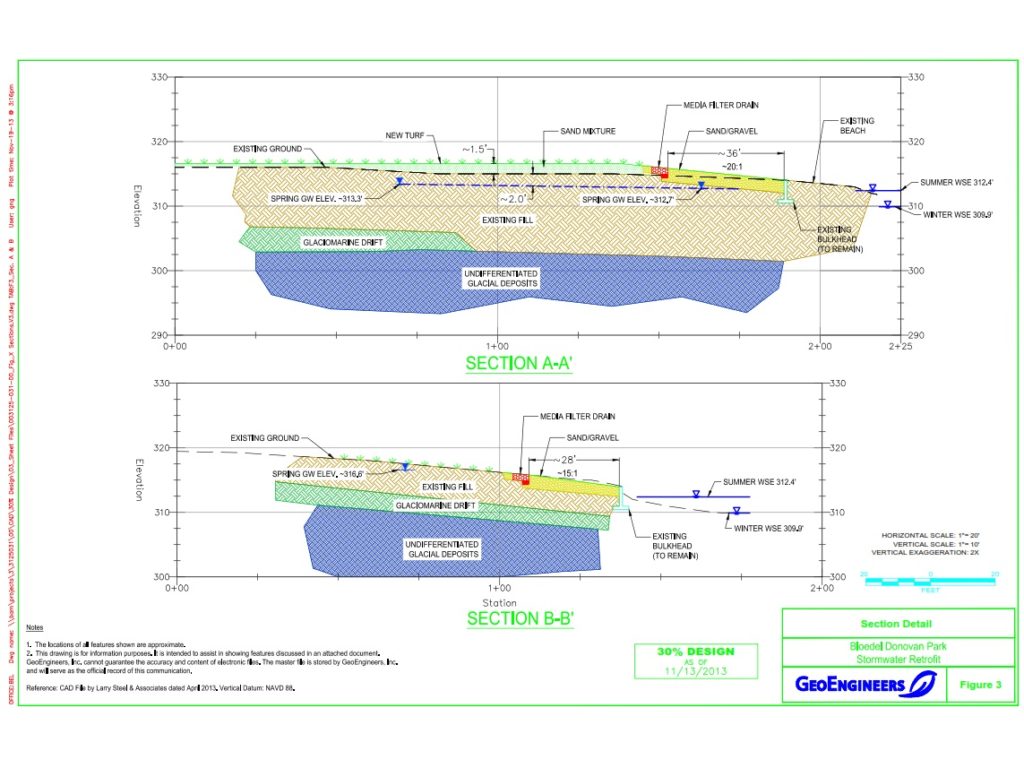Where is this located? It is located along the shoreline areas of the park from Electric Avenue to the boat ramp.
What’s special about this place? The sand on this beach is much more than it appears. It is an inviting beach as well as a stormwater filtering facility installed in 2015 to protect Lake Whatcom water quality. Prior to this project’s installation, this area had high phosphorus and fecal contamination. Although phosphorus and fecal bacteria were draining off this area at one time, they weren’t higher than other similar lawn areas. The City Parks and Recreation Department uses phosphorus-free fertilizer and bags lawn clippings. A bulkhead used to armor part of this shoreline and was replaced with a sandy beach that improved recreational use of the area. Check out the images and maps below to see how the media filter drain wraps around the entire shoreline of the park from Electric Avenue to the boat ramp. It is estimated that the park’s 6-acre area has reached a 90% stormwater treatment goal with a significant phosphorus reduction in large part due to this smart development strategy.
image gallery
select any photo to see a slideshow
